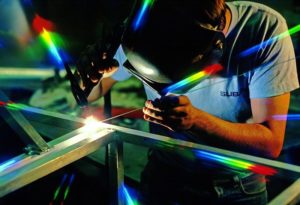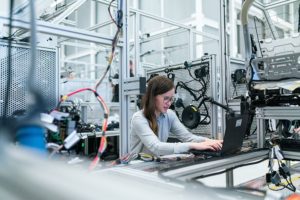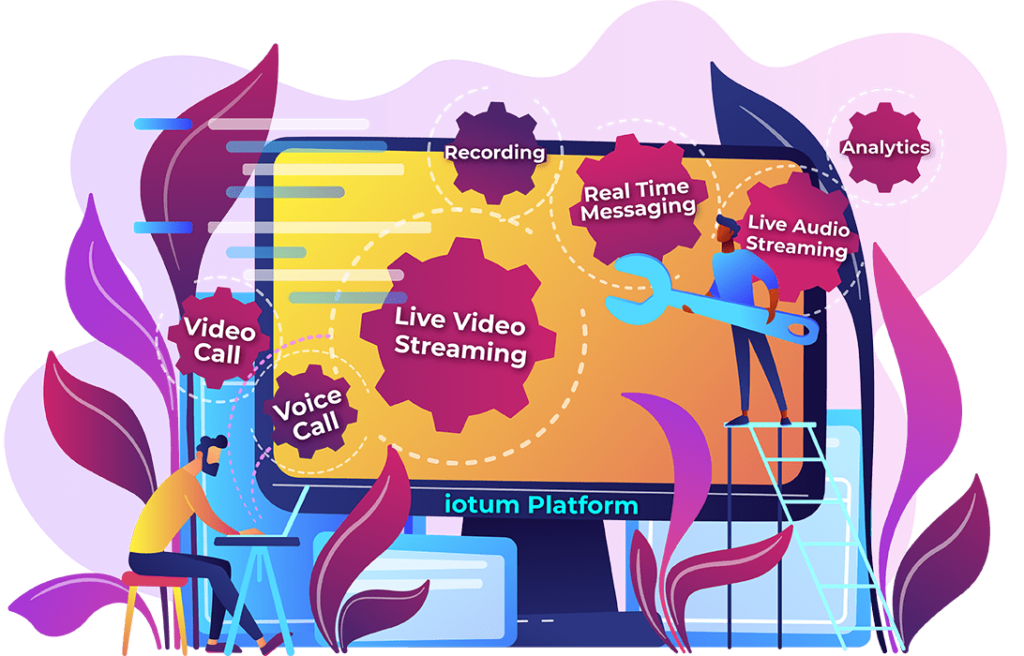 The success of your manufacturing company is driven by the force of innovation that propels it. Building the framework that supports the vision, planning, procurement, and execution is where a good chunk of resources are allocated in order to make the abstract concrete. But what good is it if the time it takes for your product to reach the market takes too long?
The success of your manufacturing company is driven by the force of innovation that propels it. Building the framework that supports the vision, planning, procurement, and execution is where a good chunk of resources are allocated in order to make the abstract concrete. But what good is it if the time it takes for your product to reach the market takes too long?
This is where manufacturing companies can truly optimize their Time to Market (TTM) by means of strategic and streamlined communication. Decisions can be made more quickly. Ideas can unfold into designs more accurately. Prototypes can become products with more precision.
This blog post will discuss ideas and insights about improving your TTM as well as the two types of efficiency workflows, and how video conferencing plays a big role.
Curious to know more? Read on.
Every manufacturing business knows that the ultimate key to not only their success but overall health and harmonization of teamwork lies in how efficient their workflow is. Having an adaptive process and methodology for how tasks, both large and small, are carried out is the difference between getting your product to market on schedule or earlier.
It all starts with communication technology that:
Provides a platform for fast, clear communication
Enables fast decision making
Enhanced team collaboration
Accessibility to anyone, from anywhere
In fact, if you want to expedite the TTM to be as streamlined as possible without compromising quality consider implementing a communication strategy that opens up the lines of communication.
What makes Time to Market so vital?
Your product’s TTM is a critical component of your product’s development. The better your grasp on the timeframe from design to delivery, the better understanding you’ll have on how to roll out the product, the time it will be released, the place in which it will live, grow and launch successfully, the demographic and how the market responds. Here’s how to look at it from two different ways:
 The 2 Kinds of Efficiencies
The 2 Kinds of Efficiencies
Every company has a working model in place, designed to boost productivity while bolstering profits and maintaining a competitive edge. The way in which work gets done, after all, is what defines your company and sets it apart. From production and investment, across to marketing and technical, all of these departments (and more) depend on each other, yet, when each ecosystem is further broken down, what does that look like?
1. Resource Efficiency
This approach refers to how work is done and handed off between individuals within a team. Each team comprises specialists who excel in their role. Therefore, they are the go-to person for the job or a specific task. While this is a common way to facilitate the completion of a function, this means that only one person is designated to see that project through from start to finish. The function is only complete when the specific person is done with it. This gap in the system can lead to a “Cost of Delay.”
What is the Cost of Delay:
Simply put, Cost of Delay is a framework that helps to determine how time will affect a projected result. By understanding the overall value, the team can have a grasp on how the value of a project can depreciate over time (more delays).
What is the potential loss or postponement of a task or function because of a delay? By calculating how long a project will take (“the total expected value with respect to time”), the team can have a better understanding and therefore contrast and compare a project to stop its value from depreciating over time.
2. Flow Efficiency
On the other hand, flow efficiency refers to how work is done holistically, in terms of the whole team. Rather than the team comprising separate specialists with each individual as the “keyholder” of their role, this model shifts to position the entire group as being capable in that specific specialization. When all individuals hold the same level of expertise, if one person is unavailable, another can take on the workload, thereby staggering the flow so it doesn’t drop. Although the work might be done at a slightly slower rate, tasks are still accomplished as everyone’s level of expertise is on par.
Both efficiency models possess advantages and disadvantages. While resource efficiency is faster, flow efficiency is more flexible. Where resource efficiency might be laser-sharp in specialization, flow efficiency is spread out and covers more territory.
At the core of either approach is a focus on time and how inter- and outer-department communication is facilitated. Either efficiency model provides a “container” that maximizes value and agency, especially when empowered by heightened communication. So how can a two-way communication platform bridge the gap?
5 Ways To Speed Up Time to Market
As business grows, so do the new interactions and processes. Getting your product from conception to market affects every industry. Accelerating TTM with the help of web conferencing can take shape in a few different ways:
5. Stick To The Calendar
Align with all teams and departments to create a calendar that outlines the product’s milestones and journey. From the start of the season include key meetings, status updates, and briefings that describe specific, measurable outputs and goals. Enlist a dedicated resource to ensure all the deadlines are being met and to keep an eye on flow or manage arising issues. Consider this as a written “contract” that everyone involved has access to. Send out invitations and reminders, and update your contact list to keep the team aware of when and how a meeting takes place.
4. Maintain Your Core Areas, Outsource The Rest
Different products are inherently more complex than others. Perhaps it’s the product itself, its integrations with other technologies, or the processes required to create and develop it. But even the aspects of the organizational workload, made up of many moving parts, can be offloaded. Consider which offshoots can be offloaded elsewhere. Bringing in partners to share the workload while working in tandem as part of the ecosystem can expedite products more effectively. Set up an online meeting with contacts overseas or on the other side of town so you can still be available in the office or on the work floor.
3. Track Results
The team should be looped in or have an understanding of the development process. Where does the product come from? What’s it’s life path and where is it on the design cycle? Sharing visual information that is accessible, visible and easy to understand facilitates better comprehension and collaboration. A platform that provides real-time information via audio and video gives the team a space to make decisions, share progress, address bottlenecks, determine blocks, etc.
2. Manage And Make Information Easy To Get A Hold Of
Organized communication keeps any team (including research and design) on top of new information or changes to the workflow. Making the intangible tangible typically requires going back to the proverbial drawing board, so when everyone is brought into the process, updates and back versions can be on hand for better transparency and a better view as to where the team is at. This can happen across different web conferencing features like screen sharing and online whiteboard.
1. Define And Adhere To Workflows
Support your workflow by cutting out extraneous and outdated methods (like working in silos, hoarding information or the “we’ve always done it this way” mentality) with a two-way web conferencing solution that centralizes information; opens up the lines of communication to the world in real-time and provides high-calibre productivity features. Everything you need to share or view is only a click away.
 Benefits of Improving Time to Market for Your Company
Benefits of Improving Time to Market for Your Company
No matter which kind of efficiency or flow is used to drive innovation and get the product to market, speeding up the design to development process across all fronts is beneficial in more ways than one.
Managerial Processes Made More Streamlined:
A solid timeline makes the project feel more concrete. Having a better idea of the TTM means the project has been broken down into more easily digestible working parts for the team to see and work on in chunks. Management can clearly define what’s ahead, create schedules, establish lead and add in buffer time to allocate resources accordingly. These nice-to-haves are all made possible when the timeline is more or less established.
More Profitability:
Keeping an eye on what your market needs and being aware of fluctuations will keep your company in touch with trends and changing habits. This allows for a better finger on the pulse of supply and demand so you can adjust your buffer time and release your product earlier!
An Edge Over The Competition:
By optimizing the speed at which the product is designed and delivered means your company can be a step ahead of the competition. With more cutting edge, time saving methods in place that streamline processes, maximize the latest technology and reduce cost of delay, you can expect higher market shares, better margin revenue and the release of your product ahead of the competition.
Improving Communication Within The Company:
Naturally, the need for tightened communication becomes imperative. Precise methods of sharing data and participating in meetings is required to relay new changes or shifts in information. The ability to rapidly share designs, plans, and market information to stakeholders, workers and employees empowers the speed at which progress can be made without sacrificing clarity and accuracy.
This is where video conferencing can really work to support any workflow and create harmony between departments. As teamwork is essential to the success of manufacturing, consider how video conferencing is the essential tool for teamwork – across all departments:
- Enhanced Interoperability
Connect with suppliers, customers, and management with online meetings from anywhere at any time. No one has to work in silos when inter-department contacts are accessible. - Real-Time Collaboration
Share presentations, videos, and spreadsheets during scheduled or impromptu meetings. Address questions on the spot and effectively get answers that determine progress accurately with the right people who make the decisions. - Reduce Travel Costs
Take upper management or stakeholders on a tour throughout the plant or hold online meetings with international sites to lessen the impact and of travel and accommodation. - Foster Productivity
Multiple high-calibre features make sharing information and collaborating faster and easier than the more traditional methods of handoffs and email chains. - Reduce Delays
Browser-based, zero download required technology means anyone from high-profile clients to workers can easily navigate the intuitive user interface to participate and access meetings.
Perhaps one of the biggest benefits of using video conferencing to help streamline operations, reduce TTM and really nurture an environment in which teamwork flourishes is by understanding how it maximizes human resources. Participants can literally be in two places at once in real-time. Whether in the production line, or physically with the client, or as a remote worker, a two-way communication solution provides the utmost flexibility to get work done.
Projects are carried out with more visibility, better synchronicity and enhanced clarity. Time opens up and isn’t wasted on commuting, travel, or on unnecessary meetings. Furthermore, important syncs can be recorded now and watched later. This is especially helpful if management is unable to attend or if a remote worker is required to participate.
Let Callbridge provide your manufacturing company with a communication solution that works to create cohesion and accelerate TTM without compromising value and quality. Using sophisticated, two-way communication technology, streamline work in tandem with workflow processes to produce results and optimize time. Callbridge comes equipped with a suite of features including text chat, conference calling, screen sharing, AI transcription and meeting recording to push forward from production to delivery seamlessly.


